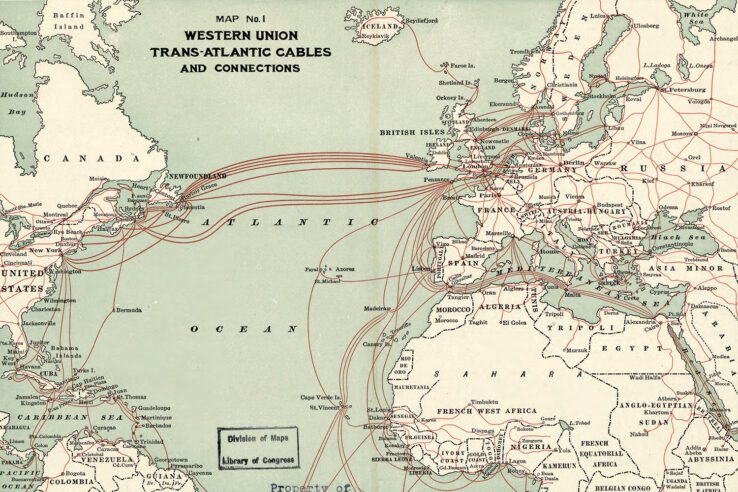European steampunk counts fewer numbers than their North American (and mainly US) counterparts. I’m pretty sure that if you would add up all the numbers in the entirety of Europe, you would get about the same as those for the United States alone (the US probably has more numbers than the entirety of Europe, come to think of it).
Originally there was a unison worldwide. Steampunks everywhere where in it for the same reason. If you spoke to steampunks from other continents, the same topics arose and likeminded individuals were easily found, no matter what country they hailed from.
Thankfully this is still the case, but sadly less and less so when one starts comparing some — frankly disturbing — recent developments in the movement in both aforementioned continents.
Activism
What is starting to be noticeable these days is that European steampunks in general are far less elitist and especially far less politically active than those in America.
American steampunks have a few very visible, and very loud, voices claiming to be representative of the scene screaming out their support for left-wing causes, such as Occupy Wall Street, and hatred for the dreaded Tea Party.
Now we Europeans do have some sort of counterpart for OWS: the Indignados, who mainly protest against government cutbacks, often the most felt by regular citizens, and the high unemployment rates, especially among the youth. They protest, they camp out and generally try to make the world a better place through their activism and ideology.
But I have not heard a single European steampunk either claim affiliation with them (nor have I seen any in the news coverage about the Indignados) or lay claim that this sort of activism is necessary should one wish to maintain membership to the steampunk movement.
Relaxed
In general, European steampunks seem to be moderate and relaxed, only rising occasionally to point out that they’re not on the same page and want the scene to remain open and welcoming.
Or to gather around the rest, so they can hang out and have a good time together, just like it used to be internationally before the politics got hold.
So my question is:
Is the North American, and US specifically, movement truly going on the political tour, creating a kind of schism between themselves and the more moderate European steampunks?
Or is this the umptieth case of gross representation due to a few loudmouths (and let’s be honest, it’s always the same people, why are they even still allowed to speak for the movement in any capacity that could even be vaguely mistaken for representative?) that are insisting on forcing their particular view on an entire subculture?
In either case, it would be a sad outcome that could only do harm to the international steampunk movement, rather than a positive one.






6 Comments
Add YoursI don’t know why steampunk has to be political in any way. Many of us are attracted to it precisely to escape the pointless rhetoric of what passes for two party political debate in the USA. The demand to politicize everything, from cupcakes to trucks, is infuriating. I sympathize with the OWS crowd and salute them for doing something in an age of utter apathy, but wish they’d protest the endless, sick wars of the Bush and Obama administrations, and the corresponding drastic erosion of constitutional rights, rather than make amorphous demands of “Wall Street.”
I agree Eddie. It is perhaps a little odd that we, in the USA, tend to take ourselves and our political opinions (and other stupid stuff) very seriously. Recently, a friend of mine threatened to shoot me when I criticized poor Rick Perry (one of the Republican Presidential candidates). He may not be exaggerating, and he is a crack shot.
Still, what could be worse than the enriched and half-naked arteests in Black Rock Nevada discovering Steampunk. Really, if the Steampunk aesthetic shows up at Burning Man will the world end? What’s that? It already has? We’re doomed!
“is this the umptieth case of gross representation due to a few loudmouths….?”
Yes.
That’s exactly what’s going on.
The average North American steampunk inhabits a subset of sci-fi fandom. There may be a trending towards more progressive attitudes across the group as a whole but otherwise this is a very middle-class display of conspicuous consumption and leisure in the service of escapism.
It’s all about as subversive a Renaissance Faire and has about as much influence on the world outside its own echo chambers.
The protestors are nothing more than hipsters angry that their Art History and philosophies degrees aren’t paying their $200k student loans.
“But the underpriv…!” Let me stop you right there. What we consider poor in the United States is still wealthier than most people living in the world (Anyone making under $22k). Go to Somalia, Nigeria, India, and Ecuador to see the peasant farmers there; come back and tell me if you still honestly think that these protestors are really an oppressed class of Americans.
Im agree with Ian Brackley, the same voices.
The steampunk is world wide and too far to be a political movement. Many of us are simply people than don´t like some injustice, but that doesn´t mean that the label “steampunk” got to fit there.
On Latin America there is nothing like a political steampunk, is an style with many expressions, politics included for those who want.
But I think many of us want to left politics a little out of this.
Science fiction – and thus steampunk, whether literature or an aesthetic referencing that literature – uses fictional futures and pasts to lead its readers to think about their present(s). As such, leading readers to consider other possibilities that are relevant to the present, it is inherently political.
But NOT political in the “republican or democrat” or even “conservative or liberal” sense. Many if not most works of science fiction involve some level of social critique, and certainly steampunk is included. In that sense, yes, steampunk stories and artists are political. But that certainly does not “require” those who read and think about, or even craft, make, or dress to those stories to be supporters of a particular brand of modern American politics.
Who could say that “everyone who reads science fiction MUST hold a particular political view” or “everyone who paints stars MUST be a follower of a particular school of economics”? Must every Trekkie be communist? Of course not.
In the mid 2000s, there was a surge of “makers,” those who carried the imagery of their loved stories into the arts. A very small number of very loud voices among those makers loudly cried that anyone who did not make their own art were not “real” steampunks, and could not belong. At the same time, a very small number of very loud voices amongst those who did not make art loudly cried that only reading and discussing literature counted and that anyone who suggested otherwise were not “real” steampunks, and could not belong.
Neither extreme is true.
In the same sense, a vast number of things are “politics.” Thinking about and discussing relevant issues through the medium of steampunk science fiction [playing with the past to explore possible futures to learn more about the present?] is definitely political, without needing to support one particular cause, one particular “brand,” or one particular past, present, or future. Extreme politics are not the only politics.